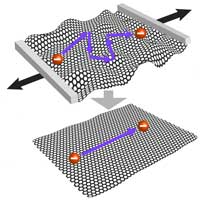 Bumps on a road slow down our pace, so do corrugations in graphene to travelling electrons. By flattening the corrugations out, we help electrons move effectively faster through a graphene sheet.
Bumps on a road slow down our pace, so do corrugations in graphene to travelling electrons. By flattening the corrugations out, we help electrons move effectively faster through a graphene sheet.
Apr 17th, 2020
Read more
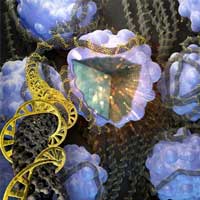 Stabilizing the surface of over-lithiated layered oxides using DNA from salmon and carbon nanotubes. Improved catalyst performance and lifespan found through the use of integrated advanced analytical techniques.
Stabilizing the surface of over-lithiated layered oxides using DNA from salmon and carbon nanotubes. Improved catalyst performance and lifespan found through the use of integrated advanced analytical techniques.
Apr 17th, 2020
Read more
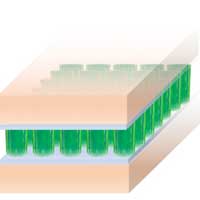 Thermal conductivity three times higher than conventional materials, enabling practical use as a heat dissipation material.
Thermal conductivity three times higher than conventional materials, enabling practical use as a heat dissipation material.
Apr 17th, 2020
Read more
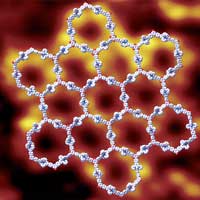 Scientists have reached a new milestone in the development of two-dimensional supramolecules - the building blocks that make areas of nanotechnology and nanomaterial advancement possible.
Scientists have reached a new milestone in the development of two-dimensional supramolecules - the building blocks that make areas of nanotechnology and nanomaterial advancement possible.
Apr 17th, 2020
Read more
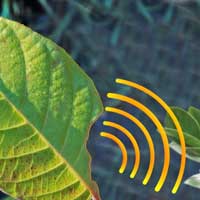 Carbon nanotubes embedded in leaves detect chemical signals that are produced when a plant is damaged.
Carbon nanotubes embedded in leaves detect chemical signals that are produced when a plant is damaged.
Apr 15th, 2020
Read more
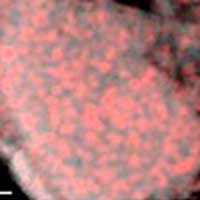 Scientists designed and tested a new two-dimensional catalyst that can be used to improve water purification using hydrogen peroxide.
Scientists designed and tested a new two-dimensional catalyst that can be used to improve water purification using hydrogen peroxide.
Apr 15th, 2020
Read more
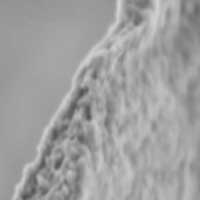 Researchers developed an extremely low-density tin 'bubble', which makes the generation of extreme ultraviolet reliable and low cost. This novel technology paves the way for various applications in electronics and shows potential in biotechnology and cancer therapy.
Researchers developed an extremely low-density tin 'bubble', which makes the generation of extreme ultraviolet reliable and low cost. This novel technology paves the way for various applications in electronics and shows potential in biotechnology and cancer therapy.
Apr 15th, 2020
Read more
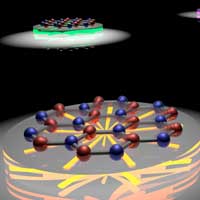 New research, using an atomically-thin material, constitute a significant step forward in understanding light?matter interactions of quantum systems in 2D materials, and the journey towards scalable on-chip devices for quantum technologies.
New research, using an atomically-thin material, constitute a significant step forward in understanding light?matter interactions of quantum systems in 2D materials, and the journey towards scalable on-chip devices for quantum technologies.
Apr 15th, 2020
Read more
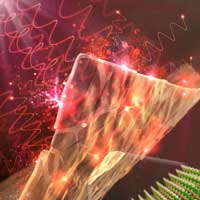 Researchers developed an ultrathin nanometer-thick film, using MXene, a new two-dimensional nanomaterial for EMI shielding.
Researchers developed an ultrathin nanometer-thick film, using MXene, a new two-dimensional nanomaterial for EMI shielding.
Apr 15th, 2020
Read more
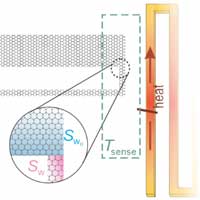 Researchers have demonstrated that graphene can be used to build sensitive and self-powering temperature sensors. The findings pave the way for the design of highly sensitive thermocouples, which could be integrated in nanodevices and even living cells.
Researchers have demonstrated that graphene can be used to build sensitive and self-powering temperature sensors. The findings pave the way for the design of highly sensitive thermocouples, which could be integrated in nanodevices and even living cells.
Apr 14th, 2020
Read more
 Scientists modeled the behavior of nanobubbles appearing in van der Waals heterostructures and the behavior of substances trapped inside the bubbles. The new model will help obtain equations of state for substances in nano-volumes, opening up new opportunities for the extraction of hydrocarbons from rock with large amounts of micro- and nanopores.
Scientists modeled the behavior of nanobubbles appearing in van der Waals heterostructures and the behavior of substances trapped inside the bubbles. The new model will help obtain equations of state for substances in nano-volumes, opening up new opportunities for the extraction of hydrocarbons from rock with large amounts of micro- and nanopores.
Apr 14th, 2020
Read more
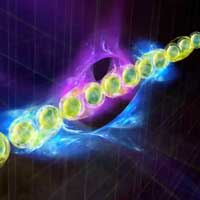 Topological materials attract great interest and may provide the basis for a new era in materials development. Physicists now present a new measuring method that allows to identify and characterize so-called topological invariants on various experimental platforms.
Topological materials attract great interest and may provide the basis for a new era in materials development. Physicists now present a new measuring method that allows to identify and characterize so-called topological invariants on various experimental platforms.
Apr 14th, 2020
Read more
 Researchers have developed're-attachable micro-supercapacitors using highly swollen laser-induced-graphene electrodes.
Researchers have developed're-attachable micro-supercapacitors using highly swollen laser-induced-graphene electrodes.
Apr 14th, 2020
Read more
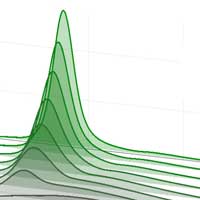 A new study examines the propagation of energy as sound waves in a quantum gas, revealing for the first time strong variations in the nature of the sound wave as a function of temperature.
A new study examines the propagation of energy as sound waves in a quantum gas, revealing for the first time strong variations in the nature of the sound wave as a function of temperature.
Apr 14th, 2020
Read more
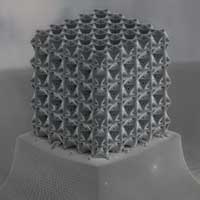 Novel plate-cell architecture reaches theoretical limit of performance.
Novel plate-cell architecture reaches theoretical limit of performance.
Apr 13th, 2020
Read more
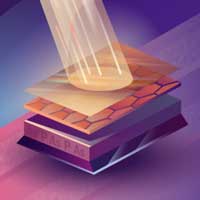 Scientists have calculated the parameters of photodetectors comprised by layers of graphene and a combination of black phosphorus and black arsenic. These sensors are able to detect radiation with energy less than the band gap of the constituent layers without graphene.
Scientists have calculated the parameters of photodetectors comprised by layers of graphene and a combination of black phosphorus and black arsenic. These sensors are able to detect radiation with energy less than the band gap of the constituent layers without graphene.
Apr 13th, 2020
Read more
 Bumps on a road slow down our pace, so do corrugations in graphene to travelling electrons. By flattening the corrugations out, we help electrons move effectively faster through a graphene sheet.
Bumps on a road slow down our pace, so do corrugations in graphene to travelling electrons. By flattening the corrugations out, we help electrons move effectively faster through a graphene sheet.















 Subscribe to our Nanotechnology News feed
Subscribe to our Nanotechnology News feed